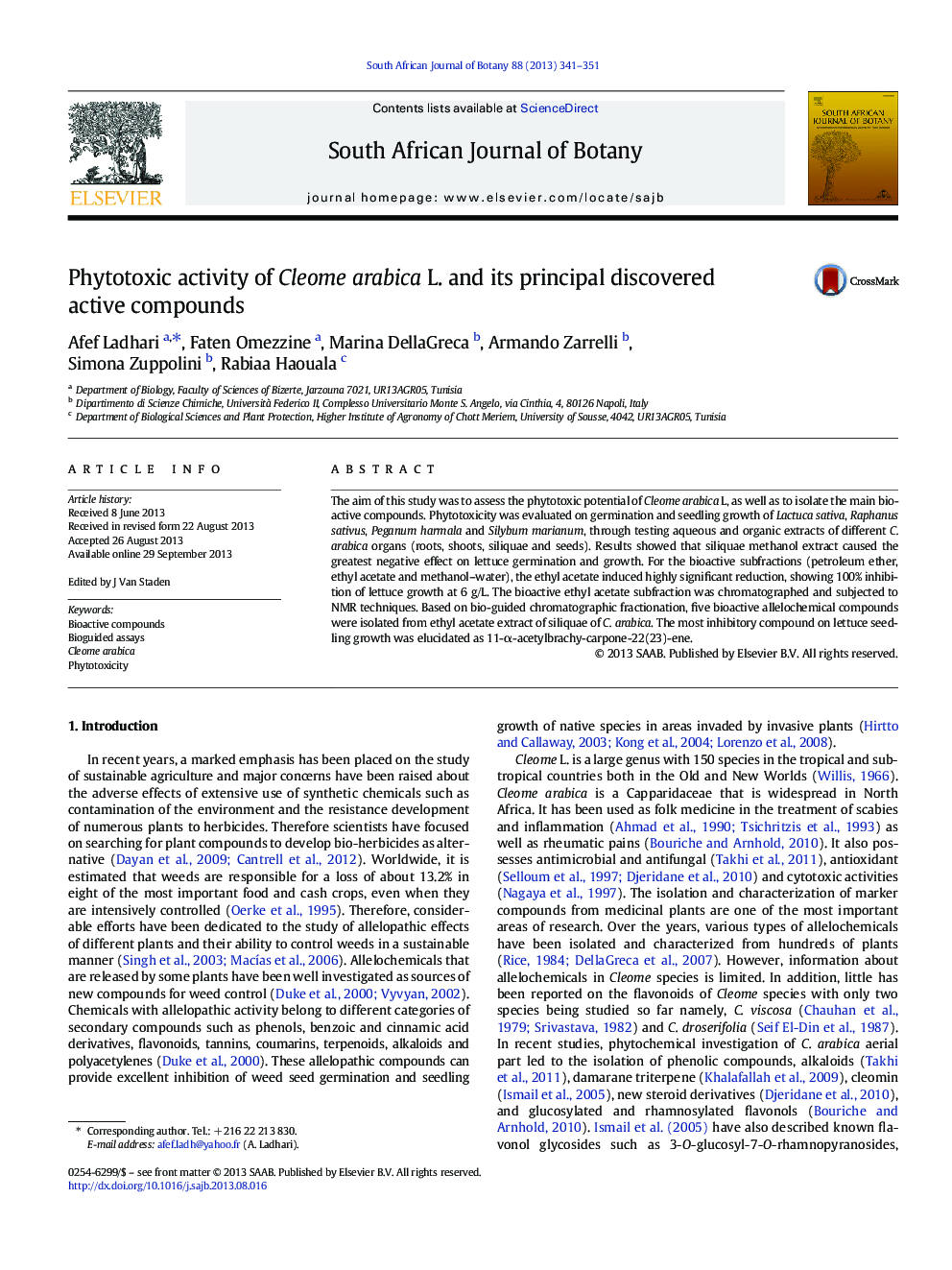| Article ID | Journal | Published Year | Pages | File Type |
|---|---|---|---|---|
| 6379138 | South African Journal of Botany | 2013 | 11 Pages |
â¢Cleome arabica possesses potent phytotoxic effect.â¢The phytotoxic effect was confirmed by isolation of active compounds.â¢The most inhibitory compound was elucidated through NMR techniques as 11-α-acetylbrachy-carpone-22(23)-ene.â¢It is the first report of its isolation from siliquae of C. arabica as a phytotoxic compound.
The aim of this study was to assess the phytotoxic potential of Cleome arabica L, as well as to isolate the main bioactive compounds. Phytotoxicity was evaluated on germination and seedling growth of Lactuca sativa, Raphanus sativus, Peganum harmala and Silybum marianum, through testing aqueous and organic extracts of different C. arabica organs (roots, shoots, siliquae and seeds). Results showed that siliquae methanol extract caused the greatest negative effect on lettuce germination and growth. For the bioactive subfractions (petroleum ether, ethyl acetate and methanol-water), the ethyl acetate induced highly significant reduction, showing 100% inhibition of lettuce growth at 6 g/L. The bioactive ethyl acetate subfraction was chromatographed and subjected to NMR techniques. Based on bio-guided chromatographic fractionation, five bioactive allelochemical compounds were isolated from ethyl acetate extract of siliquae of C. arabica. The most inhibitory compound on lettuce seedling growth was elucidated as 11-α-acetylbrachy-carpone-22(23)-ene.
